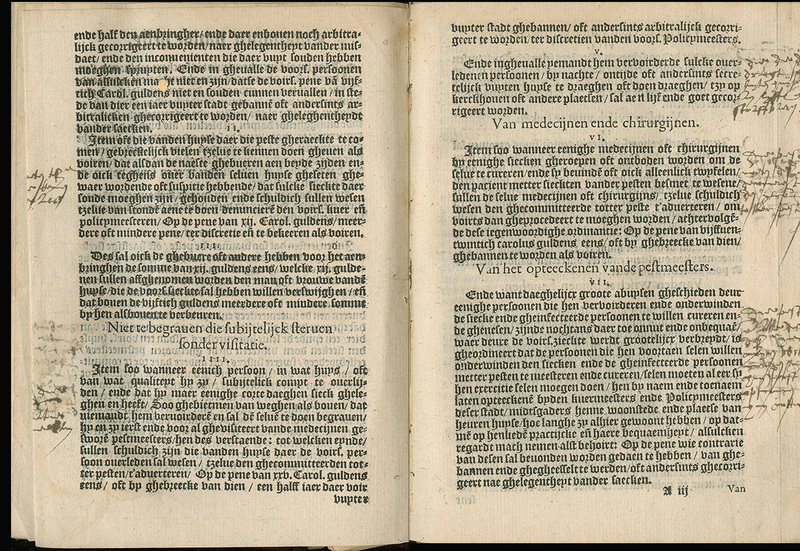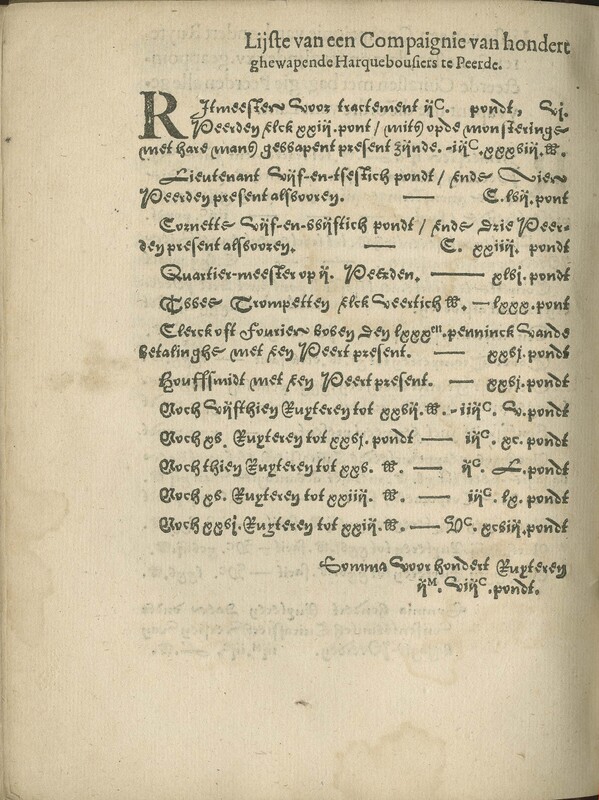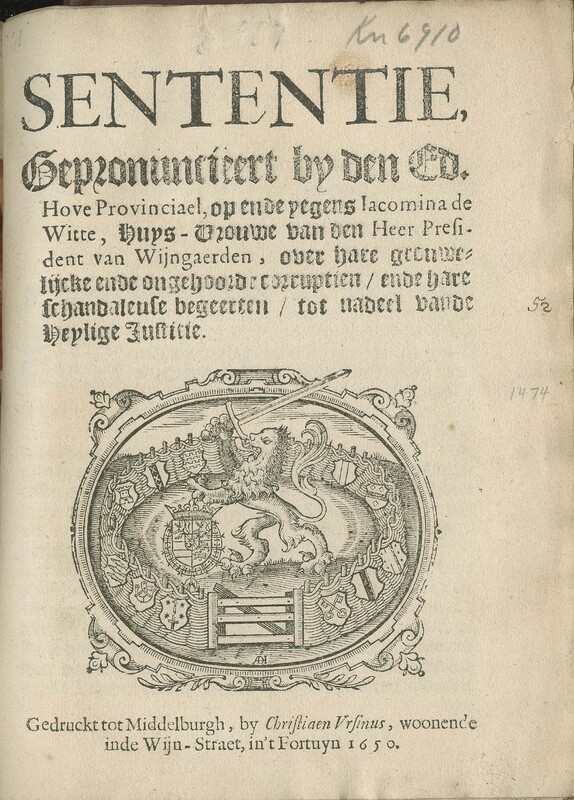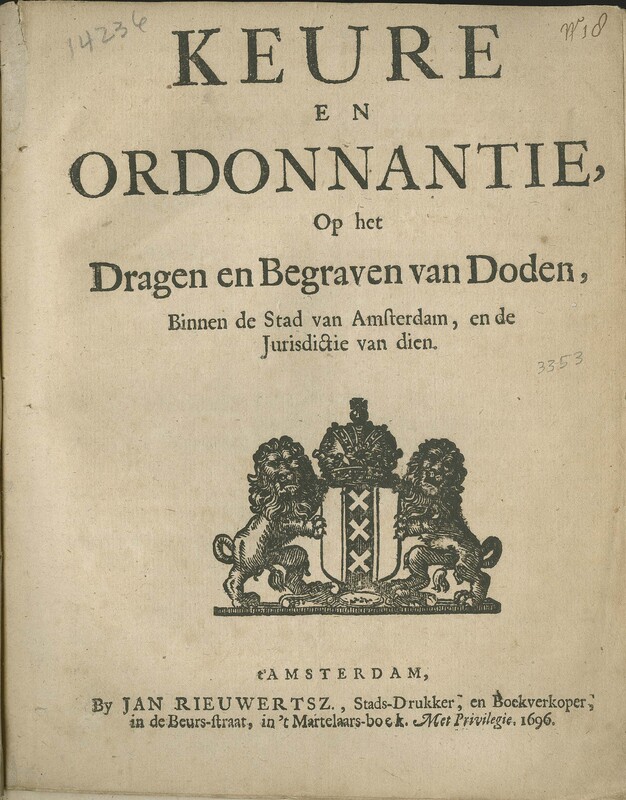Internal Affairs
In addition to pamphlets addressing political and religious matters, our collection boasts a diverse array of documents, including ordinances and edicts tailored to inform citizens about issues directly impacting their lives. For example, some encompass regulations aimed at combating the spread of the plague, organizing military musterings, and allocating resources for funeral arrangements. Pamphlets also served as conduits for panegyrical literature, strategically crafted to garner support for the Orange dynasty. An illustrative example is a publication featuring verses celebrating Wilhelm III's 14th birthday. Notably, a pamphlet detailing a corruption case against Jacomina de Witte (1582-1661), the spouse of Johan Oem van Wijngaarden, president of the legal court in The Hague, holds particular intrigue.
Above is an ordinance issued in Antwerp on July 12, 1580, concerning regulations to fight the spread of the plague. It establishes the rules for burial permits and the procedures to be followed by doctors and the so-called "plague masters." Our copy includes contemporary annotations on the margins.
Following the great outburst of bubonic plague, the so-called "Black Death", which devastated Europe, northern Africa, and the Middle East in the fourteenth century (1346-1352), lesser outbursts of pestilence would appear in Europe in subsequent decades. By the sixteenth century, it was widely established that this disease spread through human contagion, either by physical contact with a sick person or by touching their clothes. Consequently, the authorities of cities and towns issued strict regulations such as obligatory quarantine for the sick.
This pamphlet records an edict issued in 1599 by the States General of the United Provinces of the Netherlands about the mustering of military companies. The page on display above shows lists of regulations about the armament of the cavalry, along with lists, including salaries, of the companies of cavalry, musketeers, and foot soldiers. The text is printed with a variety of typefaces: gothic (black-letter), roman, and civilité.
Adorned with a woodcut depicting a rendition of the coat of arms of the Dutch Republic—a lion grasping a sword in its right paw and resting its left paw on the coat of arms of the House of Orange-Nassau—this pamphlet provides a meticulous account of the verdict rendered against Jacomina de Witte (1582-1661), the spouse of Johan Oem van Wijngaarden, the presiding judge of the legal court in The Hague. De Witte was convicted of accepting bribes to manipulate court cases through her husband's office, as well as of trafficking in information and bribing court officials. Although her husband was absolved of any complicity, she received a twelve-year banishment from the provinces of Holland, Zeeland, and Friesland, along with a substantial fine. The Witte affair of 1649 prompted legislative reform prohibiting the provision of gifts to officials or their family members.
As shown above, the title page of this ordinance on funeral regulations includes a woodcut representing the coats of arms of the city of Amsterdam. It consists of a shield with a black pale (the band running vertically down the center of a shield) filled with three Saint Andrew's crosses; above the shield is the Imperial Crown of Austria; both the shield and the crown are flanked by two lions.
Issued on January 10, 1696, this ordinance is aimed to take effect on January 31, 1696. It pertains to funerals within Amsterdam, especially concerning reducing the number of functionaries involved, with charts of wages to be paid to undertakers, their assistants, pallbearers, lantern carriers, etc. Interestingly, this ordinance of January 10th was annulled before it took effect because of riots instigated by undertakers.
The title page of this pamphlet features a woodcut portraying the coat of arms of Wilhelm III, Prince of Orange (1650-1702). The quarters of the shield depict lions and gunpowder flasks, symbolizing strength and warfare, respectively. Within its pages, the pamphlet contains verses commemorating Wilhelm's 14th birthday. Popularly known as William of Orange, he held the title of sovereign Prince of Orange since birth, later assuming the role of Stadholder of the Dutch provinces of Holland, Zeeland, Utrecht, Guelders, and Overijssel from the 1670s onward. William ascended to the throne as King of England, Ireland, and Scotland in 1689, reigning until his passing in 1702.
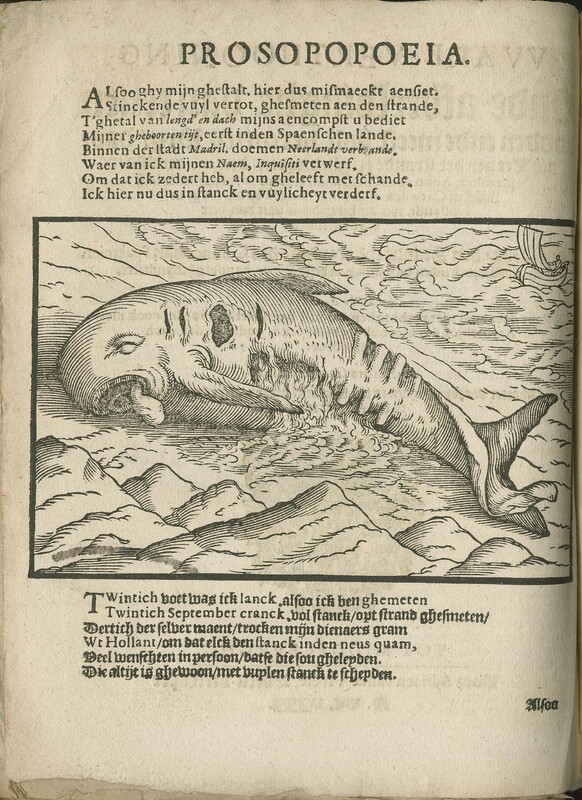
Religious Battles during The Twelve Years Truce (1609-1621)
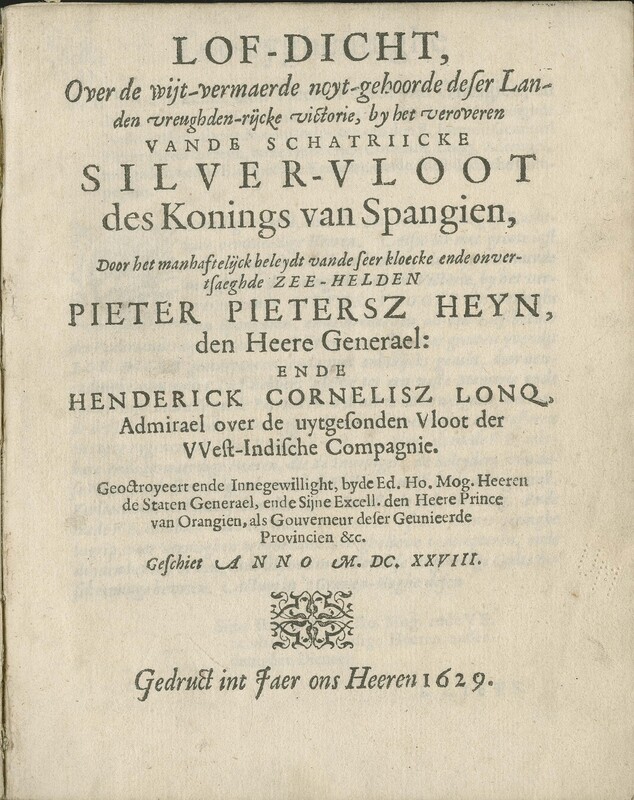
The Road to Sovereignty and Commercial Expansion

